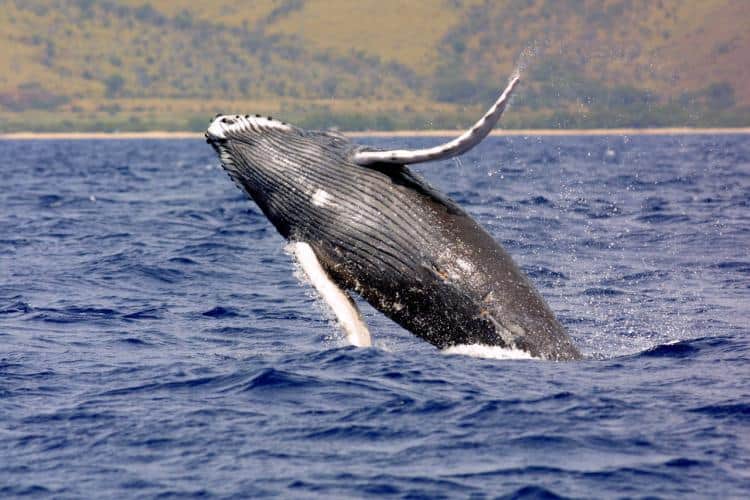Understanding the Majestic Humpback Whale: A Parent’s Guide
Welcome to the fascinating world of humpback whales, gentle giants of the sea! As a parent, you may be looking for ways to educate your children about these magnificent creatures or planning a family adventure to witness them in their natural habitat. Whatever your interest, this comprehensive guide will dive deep into the life of humpback whales and provide you with engaging information to share with your little ones. Let’s set sail on an educational journey into the marine world of humpback whales!
What Are Humpback Whales?
Humpback whales, scientifically known as Megaptera novaeangliae, are large marine mammals known for their impressive size and distinctive behaviors. They belong to the order Cetacea, which includes whales, dolphins, and porpoises. Humpback whales are easily recognizable by their long pectoral fins, which can be up to a third of their body length, and their knobbly head that’s dotted with tubercles.
The Physical Characteristics of Humpback Whales
Did you know that adult humpback whales can reach lengths of 48 to 62.5 feet and weigh up to 40 tons? Their body structure is designed for powerful swimming, and their black and white coloration is not just for beauty; it’s also a clever camouflage technique known as countershading. When teaching your kids about humpback whales, highlight their large flippers and tails, which they often use to slap the water, creating a spectacle known as “pectoral slapping” or “tail lobbing.”
Tips for Parents:
When discussing whale sizes with your children, an easy way to visualize it is by comparing the whale’s length to something they are familiar with. For instance, a humpback whale could be as long as a school bus!
Humpback Whale Diet and Feeding Habits
Humpback whales are known for their unique and diverse feeding techniques, including the famous ‘bubble net feeding’ behavior. They primarily feed on krill and small fish, and they have baleen plates instead of teeth, which help them filter their food from the water. Educating your children on the dynamic feeding strategies of humpback whales can be an exciting and interactive experience.
The Great Migrations of Humpback Whales
One of the most remarkable aspects of humpback whales is their annual migration. These whales travel thousands of miles between their feeding grounds in the polar waters and their breeding grounds in tropical or subtropical areas. It’s a journey of survival, driven by the quest for plentiful food sources and the need to raise their calves in warmer waters.
The Mystical Songs of Humpback Whales
Humpback whales are not just large marine creatures; they are also famous for their hauntingly beautiful songs. These complex vocalizations can last for hours and are primarily sung by males, perhaps in courtship or as a dominance display. Introducing your children to the songs of the humpback whale can be a great way to inspire an appreciation for marine wildlife.
As we are just scratching the surface of the world of humpback whales, our guide will further explore the intricate details of their behaviors, the role they play in ocean ecosystems, and how we can help conserve these majestic creatures for future generations to enjoy. Get ready to plunge into the depths of knowledge on humpback whales that will not only captivate your family’s interest but also contribute to a profound respect for our planet’s wildlife!
Stay tuned as we continue our enthralling exploration of humpback whales, their environment, and what makes them such an essential part of our global biodiversity. Be prepared to be wowed by the wonders of these sea giants in the next part of our Humpback Whale guide.

5 Essential Tips for Parents Preparing for a Humpback Whale Encounter
Sharing the experience of witnessing humpback whales in their natural environment can be a thrilling family activity. Here are five things parents should keep in mind to ensure a safe and enjoyable encounter:
1. Choose the Right Whale Watching Tour
Selecting a reputable whale watching company is crucial. Look for operators that prioritize safety and are respectful of wildlife regulations. They should adhere to guidelines that ensure the whales are not disturbed during your visit. Booking a tour with knowledgeable guides will also enhance your family’s experience as they share educational insights about the whales’ behaviors.
2. Educate Your Family About Humpback Whales Beforehand
Preparing your children with facts about humpback whales can make the trip more meaningful. Teach them about the whales’ migration, communication, and conservation efforts. Engaging in interactive materials, such as documentaries or books, can pique their curiosity and make the actual sighting even more exciting.
3. Ensure Safety and Comfort
When embarking on a whale watching adventure, remember to dress in layers as it can be chilly at sea, even in warm climates. Equip your family with life jackets, and bring along sun protection, binoculars for a closer view, and snacks to keep everyone comfortable and happy during the trip.
4. Practice Patience and Respect for Nature
Whales are wild animals and sightings are not guaranteed. Emphasize to your children the importance of patience and respecting nature’s unpredictability. It’s also vital to follow the crew’s instructions at all times for the safety of your family and the whales.
5. Contribution to Conservation
Use this opportunity to teach your children about the importance of marine conservation. Discussing threats such as pollution and entanglement can help them understand why protecting these animals is critical. Consider contributing to or adopting a whale through conservation programs, as a way to continue the educational journey and support humpback whale preservation.
The Crucial Role of Humpback Whales in the Ocean Ecosystem
Humpback whales play an integral role in the health of the marine ecosystem. As mega consumers of fish and krill, they help maintain balance in the food chain. Additionally, their dung is a significant source of nutrients for phytoplankton, which not only form the basis of marine food webs but also contribute to oxygen production and carbon absorption in our atmosphere. Parents can explain the interconnectivity of all life forms in the ocean, highlighting the importance of each species in maintaining the health of our planet.
Engaging in Humpback Whale Conservation: How Families Can Help
Conservation efforts are essential for protecting humpback whales and their habitats. Encourage your family to be environmentally conscious by reducing plastic use, participating in beach cleanups, and supporting sustainable seafood choices. Education is a powerful tool for conservation; thus, fostering a love for the oceans and their inhabitants in children is a meaningful step toward a cleaner and safer marine environment for the humpback whales.
Stay tuned as we continue our enthralling exploration of humpback whales, their environment, and what makes them such an essential part of our global biodiversity. Be prepared to be wowed by the wonders of these sea giants in the next part of our Humpback Whale guide.
For more great fun click here. For more information see here
Disclaimer
The articles available via our website provide general information only and we strongly urge readers to exercise caution and conduct their own thorough research and fact-checking. The information presented should not be taken as absolute truth, and, to the maximum extent permitted by law, we will not be held liable for any inaccuracies or errors in the content. It is essential for individuals to independently verify and validate the information before making any decisions or taking any actions based on the articles.




